Client-Centered Directiveness: An Oxymoron That Works – Part One
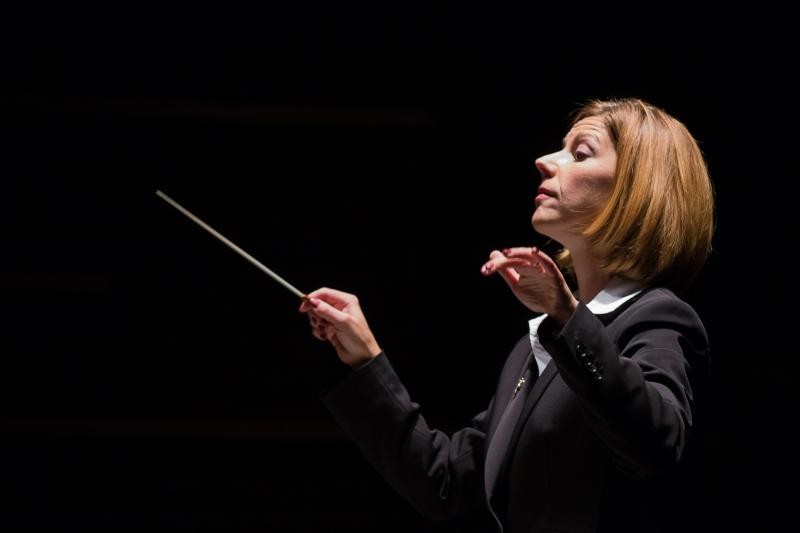
At its very foundation, coaching is client-centered. The work of Carl Rogers profoundly influenced the founders of the life coaching profession. Yet, among the thousands of health and wellness coaches we have trained at Real Balance (http://www.realbalance.com), the question of how directive or non-directive to be remains an area of unsureness and anxiety.
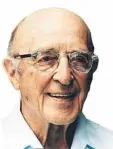 As time marches on it is easy to put the contributions of Carl Rogers into the seldom-read chapters of psychology history books thereby missing an important appreciation for the etymology of how the way we work with people today in both psychotherapy and in coaching came to be. When Rogers began his work as a psychologist and psychotherapist the theories of psychoanalysis dominated. The “therapeutic relationship” was seen as either a non-factor, or a blank slate upon which the patient (not client) would project their issues. As he worked with children, families and adults Rogers found great value in the newer “relationship theories” and related work developing in the 1930’s. In 1942 he crystalized his new take on how to work with people in psychotherapy with the publication of his groundbreaking book Counseling and Psychotherapy. It was actually Rogers who popularized the term “client”, urging, even then, a mindset shift away from treating people in therapy like “patients”.
As time marches on it is easy to put the contributions of Carl Rogers into the seldom-read chapters of psychology history books thereby missing an important appreciation for the etymology of how the way we work with people today in both psychotherapy and in coaching came to be. When Rogers began his work as a psychologist and psychotherapist the theories of psychoanalysis dominated. The “therapeutic relationship” was seen as either a non-factor, or a blank slate upon which the patient (not client) would project their issues. As he worked with children, families and adults Rogers found great value in the newer “relationship theories” and related work developing in the 1930’s. In 1942 he crystalized his new take on how to work with people in psychotherapy with the publication of his groundbreaking book Counseling and Psychotherapy. It was actually Rogers who popularized the term “client”, urging, even then, a mindset shift away from treating people in therapy like “patients”.
Initially in the 1940’s and 1950’s, Rogers’ non-directive methods assiduously avoided asking questions, making suggestions, giving advice or any other directive methods. It relied on skillful listening and reflecting feelings back to the client without judgment, allowing them to explore and work with those feelings more deeply. He soon realized that even more important than the techniques used, was the attitude of the counselor/therapist. Feelings needed to be reflected with genuine acceptance and conveyed with empathic understanding for therapy to be effective. Thus Rogers began development of the “core conditions” that what would become known as the “Facilitative Conditions of Therapy”: Genuiness or Congruence, Empathic Understanding, Unconditional Positive Regard, and Warmth.
“What clients need, said Rogers, is not the judgment, interpretation, advice or direction of experts, but supportive counselors and therapists to help them rediscover and trust their own inner experience, achieve their own insights, and set their own direction.” (http://adpca.org/content/history-0)
Rogers continued his work through the 1960’a, 1970’s and 1980’s and his “Person-centered” approach continued to contribute to the flourishing human potential movement and was completely congruent with the self-actualization work of Abraham Maslow and others. Rogers’ influence on our field of coaching is extensive. Many of his students and colleagues took this foundational work and evolved other client-centered approaches often used in coaching today, such as Appreciative Inquiry, Non-violent Communication and Motivational Interviewing.
The Coach Approach Grew Out Of Being Client-Centered
The pioneering work of the authors of Co-Active Coaching, (Whitworth, Kimsey-House, K., Kimsey-House, H., and Sandahl.)(https://www.amazon.com/Co-Active-Coaching-Changing-Business-Transforming/dp/1857885678) was steeped in the client-centered tradition. Their foundational “Cornerstone of Coaching” that the client is held to be “naturally creative, resourceful and whole” orients the coach to a mindset that is non-judgmental, accepting, and relies on the inherent drive towards self-actualization that Rogers and others spoke of. It puts the client in charge of the agenda. It introduces the concept of “co-creation” to the coaching process. And, here it shows us the beginning of a shift from purely non-directive to a shared experience of growth and change where the coach contributes more than just great listening.
Beginning coaches take the client-centered foundation of coaching very seriously. In fact they are often hesitant to offer their own perspective, to challenge their clients, or to make any suggestions. They sometimes over-compensate by being overly client-centered. Effective, and more experienced coaches, have found a way to remain true to these client-centered roots as they integrate more directive methods with their coaching.
Coaching Practice, In Reality, Is More Directive Than You Might Think
 • Coaches do ask questions, plenty of them.
• Coaches do ask questions, plenty of them.
• As coaches we share our observations with the client of what we are noticing. Sometimes referred to as “saying what is so”, we point out patterns in our client’s speech and affect that we observe. Have you noticed that each time you speak about taking time for yourself to exercise, that you immediately go into a story about your partner?
• Coaches challenge their clients. When our client offers a commitment of practicing a mindfulness or meditational method only once a week, the effective coach will ask if that will produce the results the client desires, rather than simply accepting what the client has offered.
• Coaches use tools. The moment we suggest using a coaching tool we are being directive, even if we’ve asked our client for permission to make the suggestion.
• Wellness coaches often make the suggestion of resources for healthy living information, for practicing various stress-management methods, for seeking out social support for their goals, etc. The challenge for the coach is to know just how directive to be, and with whom!
Here’s what effective directive coaching sounds like:
• “Have you considered keeping track of your behavior?” (a question, yet really a suggestion)
• “When my clients write it down on a calendar or enter it into an app they are often more successful.”
• “What I see you doing here is…”
• “Let me give you my best thinking here…”
• “I have a coaching tool here I’d like you to…”
• “Have you ever worked with myplate.gov?”
• “So what is your well-life vision?”
• “If you only practice relaxation twice a week, will that really give you the results your want?”
• “Tell me what another perspective on that would be?”
• “If you could work your best possible day, what would it look like?”
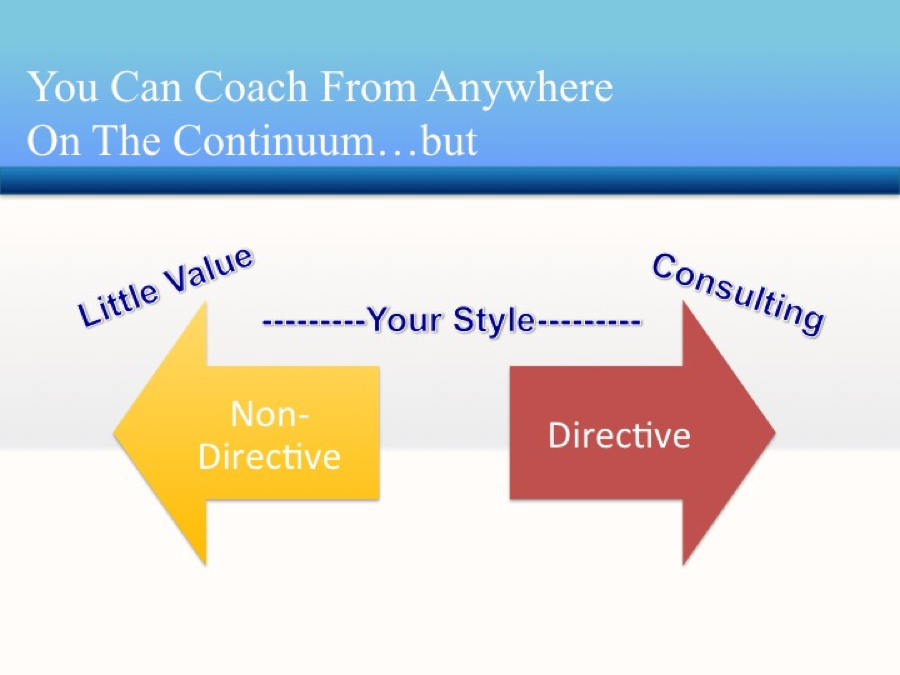
The Directive-Non-Directive Continuum
When we examine the work of both beginner and master coaches we see them all operating somewhere on a continuum from non-directive to very directive.
Operating as a coach on the extreme non-directive end of this continuum is probably more theoretical than actual. In some way coaches will demonstrate at least a degree of directedness. On the other extreme of complete directedness, coaching transitions from being coaching to, in fact, consulting. We are no longer coaching, we are being the expert/consultant who is advising and directing. In between the extremes there is lots of room for variation that still can qualify as effective coaching.
Where the coach operates on this continuum is, in part, determined by the personality and style of the coach themselves. “Be yourself” in coaching is very important to authenticity. Watch films of some of the great psychotherapists of our time and you’ll see that to a great degree their approach in therapy reflected simply who they were. Rogers really was a kind and gentle soul. Fritz Perls, while actually much more caring and empathic than many may think, was a truly irascible fellow, Albert Ellis really was a brash New Yorker. Likewise great coaches let their true selves work for themselves and for the benefit of their clients. So give yourself permission to let your own gifts show through. However, never think that “being yourself” is an excuse for not serving the client well. The timid coach may need to stretch themselves and be more actively involved. The domineering coach may need to realize when they are being overly controlling just to feel “in charge”.
Overly Non-Directive Coaching
When coaches take being non-directive too far they end up not providing as much as they can for their clients. Without any structure or guidance, many of our clients flounder for direction. In an extensive workshop with James Prochaska I once asked him about just how client-centered a coach needed to be. He said:
“Be client-centered. But, don’t be so client-centered that you are not helping someone as much as you possibly can.” James Prochaska
The overly non-directive coach:
• Doesn’t share observations about their client and the coaching process
• Doesn’t “say what is so”.
• Doesn't make any suggestions (even with permission)
• Doesn’t challenge their client.
• Provides little if any structure
• Doesn’t share what has worked for others
The overly non-directive coach essentially is not providing as much value to the client as they could be. We might even go so far as to say they are avoiding responsibility for contributing anything to the coaching process that might influence it.
Overly Directive Coaching
The overly directive coach is usually operating out of a consulting mindset whether they realize it or not. They may still be relying on an educational/informative model. Perhaps their background is more of a health educator, or a holistic health practitioner who is still being quite prescriptive. Perhaps they have a business-consulting background and believe that their clients want to be told what to do.
The overly directive coach:
• Acts more as a consultant/expert.
• Provides solutions (instead of coaching for the client to find their own solutions)
• Has a “ready to go” wellness plan for their client.
• Makes LOTS of suggestions.
• Is often rigid about structure instead of co-creating it.
• Presents lots of opinions instead of observations.
• Often doesn’t listen well and include the client point of view.
• Sometimes thinks falsely that being directive saves time.
Most all of the techniques and methods that coaches use fall somewhere on the “Coaching Spectrum”.
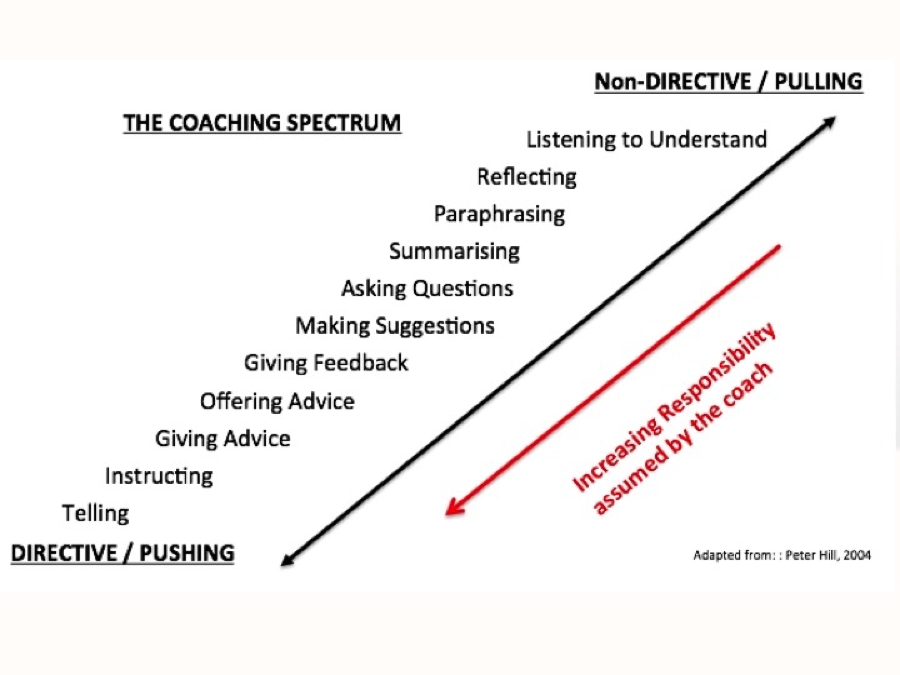
How To Keep Directive Coaching Client-Centered
• Maintain the “coaching mindset” – NCRW! (The client is held to be naturally creative, resourceful and whole.)
• Facilitate the client’s process – evoke inner wisdom.
• Don’t rescue! Work with the client to help them explore more instead of providing suggestions prematurely.
• Introduce suggestions so the client truly knows they can decline them.
• When clients decline, respect their decision. Explore it, but go with it.
• Clients are always accountable to themselves, not to you!
• All planning and accountability is co-created! Every “inch” of it.
• Record, review and count your suggestions in each session.
• Have a rational for making a suggestion.
• A “ready to go” wellness program is wellness, but not wellness coaching!
Adjusting To The Client
The other major factor contributing to how directive/non-directive an effective coach needs to be is adjusting our coaching to fit the needs and make-up of our individual client. One size truly does not fit all. We’ll look at how we make these adjustments in Part II in our next blog post.






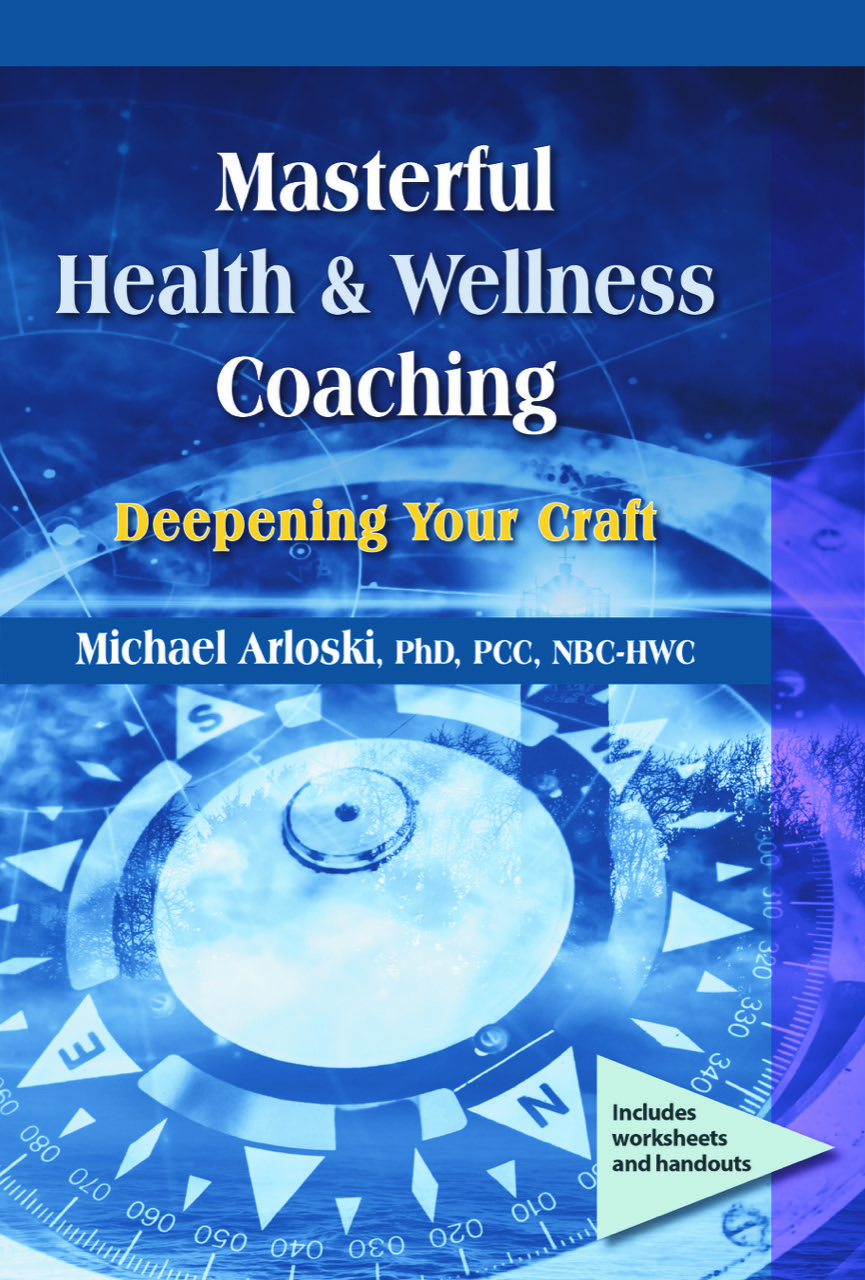

Only registered and logged in readers can leave comments.